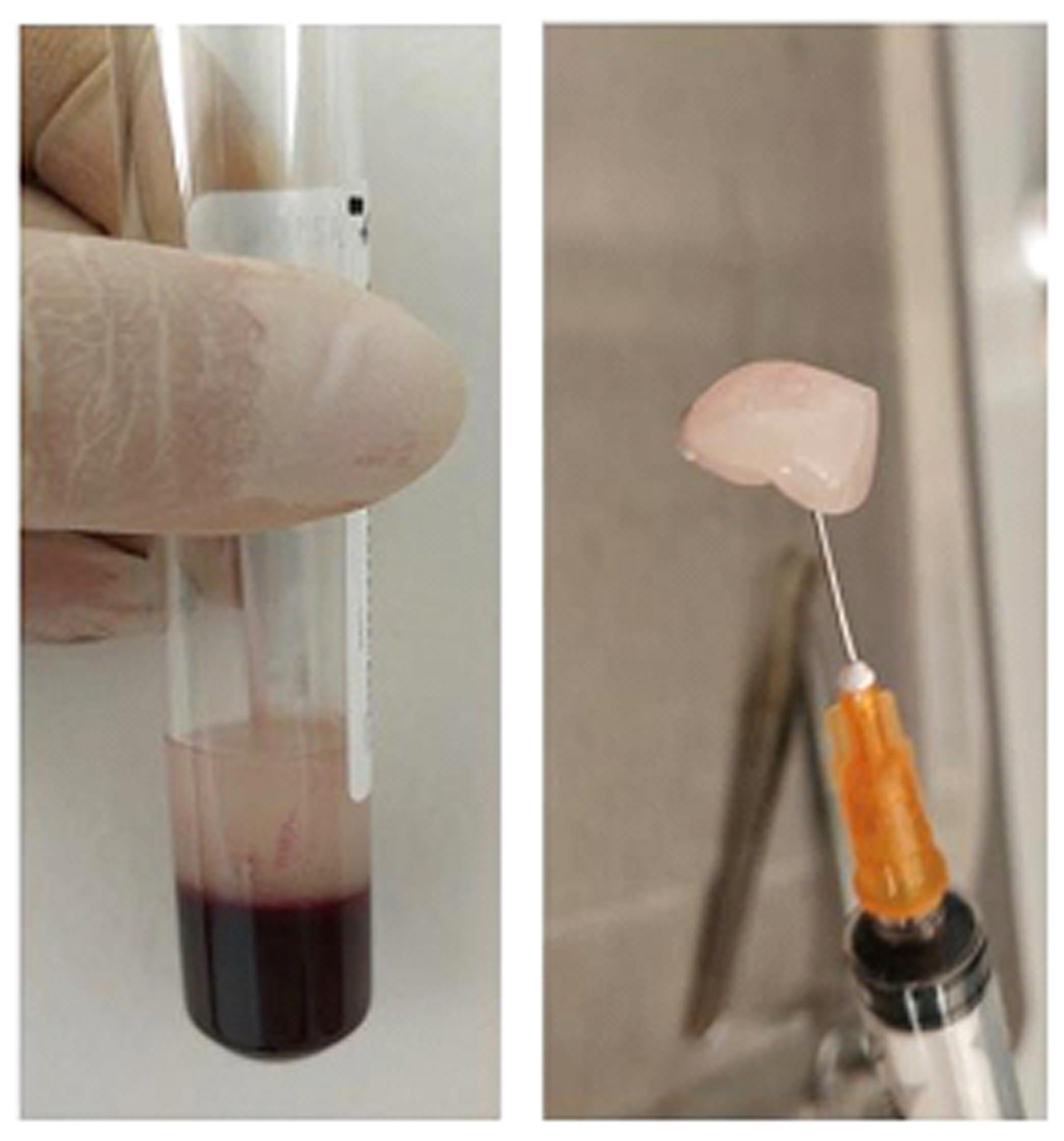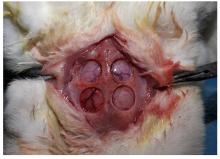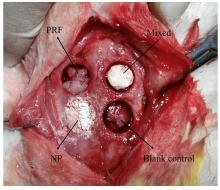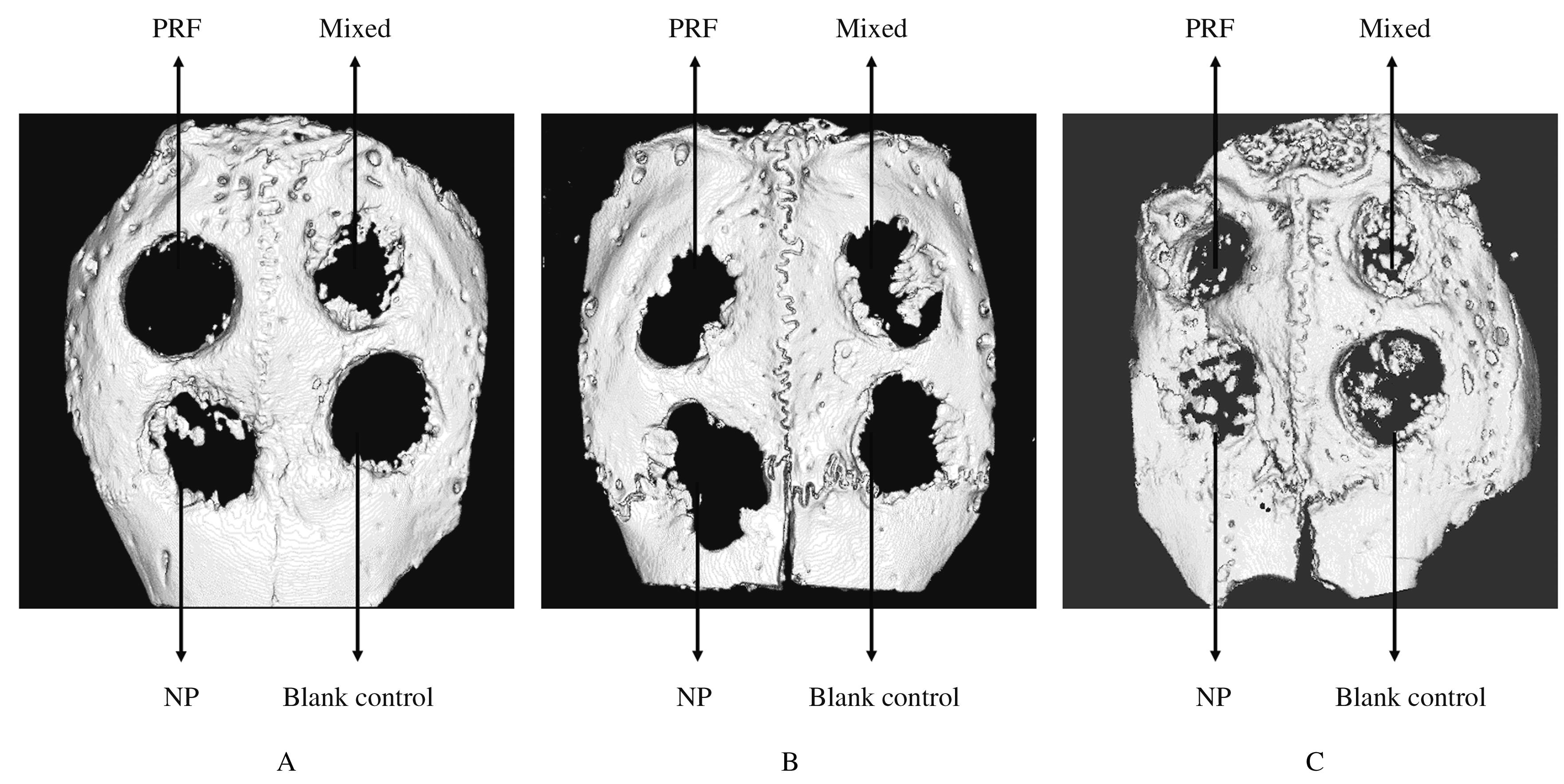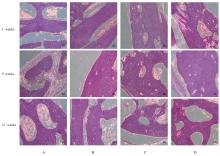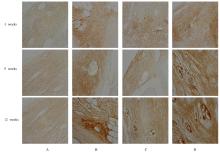| 1 |
SONG Y, LIN K, HE S, et al. Nano-biphasic calcium phosphate/polyvinyl alcohol composites with enhanced bioactivity for bone repair via low-temperature three-dimensional printing and loading with platelet-rich fibrin [J]. Int J Nanomed, 2018, 13:505-523.
|
| 2 |
LIU Z, YUAN X, FERNANDES G, et al. The combination of nano-calcium sulfate/platelet rich plasma gel scaffold with BMP2 gene-modified mesenchymal stem cells promotes bone regeneration in rat critical-sized calvarial defects[J].Stem cell Res Ther,2017,8(1):122.
|
| 3 |
陈玉阳,谢富强,张赟,等.纳米壳聚糖骨形成蛋白水凝胶修复下颌骨缺损实验研究 [J]. 实用口腔医学杂志,2014,30(5): 624-628.
|
| 4 |
GERHARD E M, WANG W, LI C, et al. Design strategies and applications of nacre-based biomaterials [J]. Acta Biomaterialia, 2017, 54:21-34.
|
| 5 |
DOHAN D M, CHOUKROUN J, DISS A,et al. Platelet-rich fibrin (PRF): a second-generation platelet concentrate.Part Ⅰ:technological concepts and evolution [J]. Oral Surg Oral Med Oral pathol Oral Radiol Endod, 2006, 101(3): e37-e44.
|
| 6 |
AL-MAAWI S, DOHLE E, LIM J, et al. Biologization of Pcl-mesh using platelet rich fibrin (Prf) enhances its regenerative potential in vitro [J]. Int J Mol Sci, 2021, 22(4): 2159.
|
| 7 |
TOVAR N, JIMBO R, GANGOLLI R, et al. Evaluation of bone response to various anorganic bovine bone xenografts: an experimental calvaria defect study [J]. Int J Oral and Maxillofac Surg,2014,43(2): 251-260.
|
| 8 |
YUN P Y, KIM Y K, JEONG K I, et al. Influence of bone morphogenetic protein and proportion of hydroxyapatite on new bone formation in biphasic calcium phosphate graft: two pilot studies in animal bony defect model [J]. J Cranio-maxillo-facial Surg, 2014, 42(8): 1909-1917.
|
| 9 |
SOHN J Y, PARK J C, UM Y J, et al. Spontaneous healing capacity of rabbit cranial defects of various sizes [J]. J Periodont Implant Sci, 2010, 40(4): 180-187.
|
| 10 |
LIU X, WEI D, ZHONG J, et al. Electrospun nanofibrous P(DLLA-CL) balloons as calcium phosphate cement filled containers for bone repair: in vitro and in vivo studies [J]. ACS applied materials & interfaces, 2015, 7(33): 18540-18552.
|
| 11 |
CHENG Y, ZHANG W, FAN H, et al. Water‑soluble nano‑pearl powder promotes MC3T3‑E1 cell differentiation by enhancing autophagy via the MEK/ERK signaling pathway [J].Mol Med Rep,2018,18(1): 993-1000.
|
| 12 |
NAGARAJA S, MATHEW S, ABRAHAM A, et al. Evaluation of vascular endothelial growth factor-A release from platelet-rich fibrin, platelet-rich fibrin matrix, and dental pulp at different time intervals [J]. J Conservat Dent,2020, 23(4): 359-363.
|
| 13 |
RAVI S, SANTHANAKRISHNAN M. Mechanical, chemical, structural analysis and comparative release of PDGF-AA from L-PRF, A-PRF and T-PRF-an in vitro study [J]. Biomater Res, 2020, 24:16.
|
| 14 |
XU J, RAO Y, WU X, et al. The osteoinductive effect of nano-nacre particles on MC-3T3 E1 preosteoblast through controlled release of water soluble matrix and calciumions [J]. Dent Mater J, 2019, 38(6): 981-986.
|
| 15 |
LASCHKE M W, MENGER M D. Adipose tissue-derived microvascular fragments: natural vascularization units for regenerative medicine [J]. Trends Biotechnol, 2015, 33(8): 442-448.
|
| 16 |
SUBBIAH R, GULDBERG R E. Materials science and design principles of growth factor delivery systems in tissue engineering and regenerative medicine [J]. Adv Healthcare Mater, 2019, 8(1): e1801000.
|
| 17 |
ZHU J, WANG F, YAN L, et al. Negative pressure wound therapy enhances bone regeneration compared with conventional therapy in a rabbit radius gap-healing model [J]. Exp Therapeut Med, 2021, 21(5): 474.
|
| 18 |
LIU K, MENG C X, LV Z Y, et al. Enhancement of BMP-2 and VEGF carried by mineralized collagen for mandibular bone regeneration [J]. Regenerative biomaterials, 2020, 7(4): 435-440.
|
| 19 |
ZHANG Y G, YANG Z, ZHANG H, et al. Negative pressure technology enhances bone regeneration in rabbit skull defects [J]. BMC Musculoskeletal Disord, 2013, 14(1):76.
|
| 20 |
ASVANUND P, CHUNHABUNDIT P, SUDDHASTHIRA T. Potential induction of bone regeneration by nacre: an in vitro study [J]. Implant Dent, 2011, 20(1): 32-39.
|
| 21 |
CASTRO A B, JVAN DESSEL, TEMMERMAN A, et al. Effect of different platelet-rich fibrin matrices for ridge preservation in multiple tooth extractions: A split-mouth randomized controlled clinical trial [J]. J Clin Periodontol, 2021,48(7):984-995.
|
 )
)
 )
)

